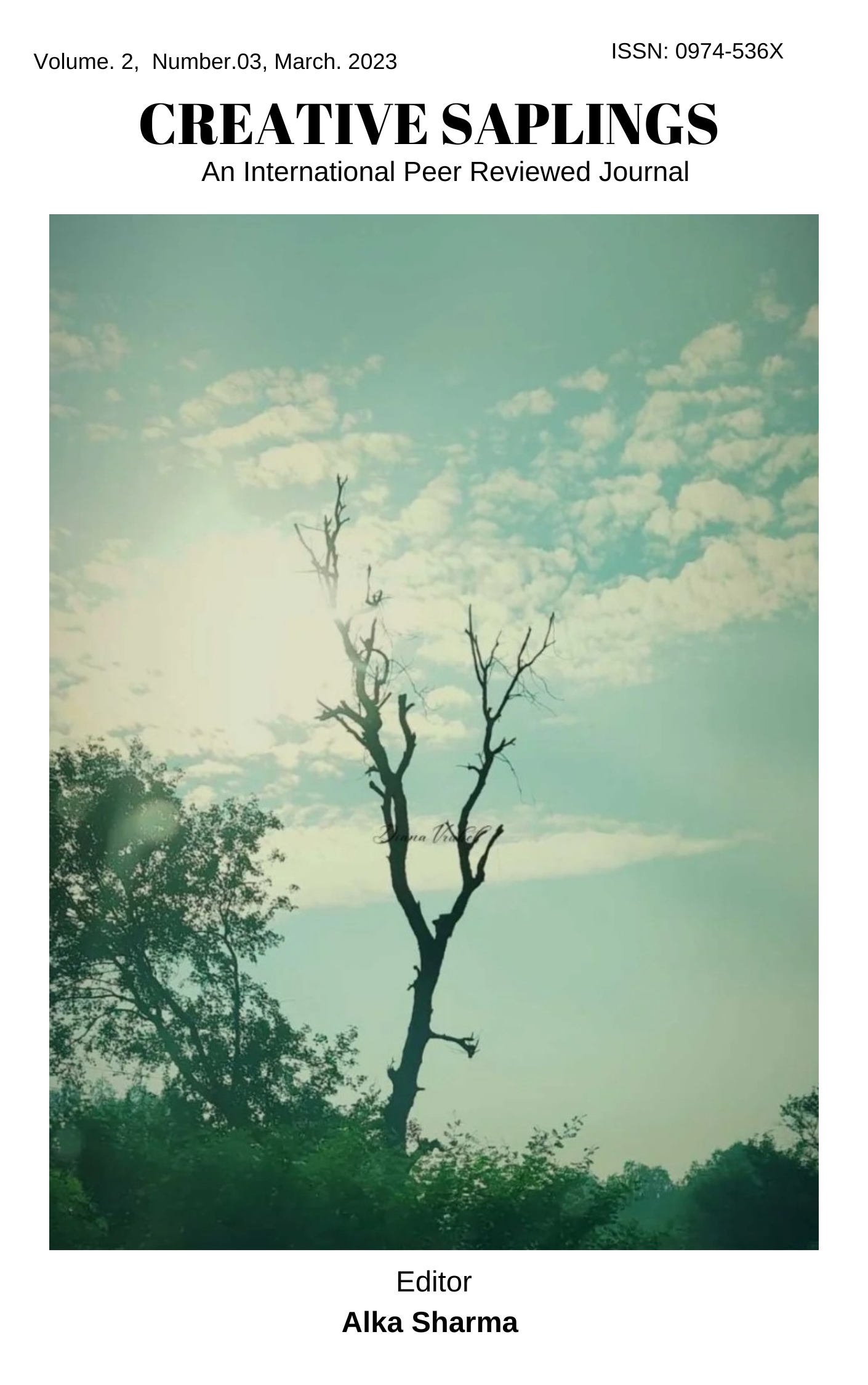Healing Power of Wordsworth’s Romantic Poetry
DOI:
https://doi.org/10.56062/gtrs.2023.1.12.230Keywords:
Poetry, Poetic therapy, Imagery, Landscape, Stress, Medicine and Nature.Abstract
Poetry has immense potential to soothe the senses and heat the wounds. Through poetry, mental health and peace of mind can be maintained with pace immeasurable. The waves of passion that runs through poet’s sensibility, soothes the senses of the readers. Poetry reading, writing and listening casts good therapeutic effects. Poetry provides peace, calmness, and comfort to the minds by elevating mood in distress and duress. Studies show that poetry therapy proves a boon to patients suffering from serious ailments and augment their emotional resilience and brings joy in their life. Our brains are electrified with rhyme and rhythm of the poetry to give emotional reaction to joy and sadness both. Like sweet melody of music, poetry heals our emotional hurts. The metaphors embellish the poetic lines with magical brilliance, and they glitter with astute meaning and message. Diction plays a very emphatic role in discerning poet’s leanings. Reflection, perception and attachment are interwoven in diction so inextricably that they turn poet’s mouthpiece, and roar and rave with perfect resonance to poetic experiences. Through the intoxicated taken-for- grantedness of the laidback reading public will take somersault by the melody of the tone and exquisiteness of diction. The paper, however, explores how poetry can be a natural tool to heal mental stress, trauma, and agony and maintain mental health well. We will examine some poetic utterances of great romantic poet William Wordsworth and see how they can be a tool to heal the emotional hurts and wounds. Moreover, we will too examine that how the nature can extend peace, purpose, poise to mind.
Downloads
References
Harms, Earnest. “The Development of Art Therapy”. Leonardo. Vol. 8, no. 3, 1975. p.241.
Wakeman, Brian E. “Poetry as Research and as Therapy”. Transformation. Vol. 32, no. 1, Jan. 2015. p- 27.
Kirti Sengupta (Edited). “Poems that Heal and Empower”. Hibiscus. Hawakal Publishers, Calcutta. 2020. p-v
Joseph de Roche (Ed.). “The Heath Introduction To Poetry”, D.C. Heath and Company, Toronto.1984. p-158.
Hazlitt, William. “The Spirit Of The Age”. George Bell and Sons, London. 1804. p. 149
Mazza, Nicholas. “Poetry Therapy Theory and Practice”. Brunner-Rotledge, New York. p.4
Hartman, Geoffrey. “Romanticism and Consciousness”: Essays on Criticism. Norton, New York. p.55
Joseph de Roche (Ed.). “The Heath Introduction To Poetry”, D.C. Heath and Company, Toronto.1984. p.163
Joseph de Roche (Ed.). “The Heath Introduction To Poetry”, D.C. Heath and Company, Toronto.1984. p.161
Joseph de Roche (Ed.). “The Heath Introduction To Poetry”, D.C. Heath and Company, Toronto.1984. p-171.
Joseph de Roche (Ed.). “The Heath Introduction To Poetry”, D.C. Heath and Company, Toronto.1984. p.169
Darwin, Erasmus. “Zoonomia”, Vol2. Johnson, London. 1796.p.161
Wordsworth, William. “The letters of William Wordsworth and Dorothy Wordsworth”, Vol.2. Ernest de Selincourt, Oxford. 1993. p168
Keats, John. “The Letters of John Keats”. Ed. Jack Stillinger, Cambridge: Beknap Harvard, 2002. p.125
Hazlitt, William. “The Spirit of The Age”. George Bell and Sons, London. 1804. p-149
Arnold, Mathew. “Memorial Verses: The Poems of Mathew Arnold”.. Ed. Kenneth Allot. Longman, New York. 1965.p.63
Downloads
Published
Issue
Section
License
Copyright (c) 2023 Prof. Mirza Sibtain Beg

This work is licensed under a Creative Commons Attribution-NonCommercial 4.0 International License.





